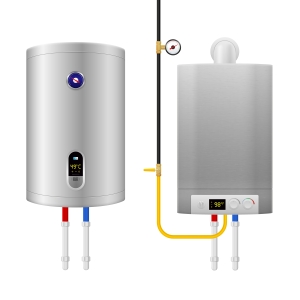Your heart works tirelessly to pump blood and oxygen throughout your body. But how do doctors assess its function and detect potential problems? One of the most commonly used diagnostic tools is the Transthoracic Echocardiogram (TTE).
This non-invasive imaging technique provides a detailed view of your heart's structure and function, helping healthcare professionals diagnose various cardiovascular conditions.
This guide will explore the purpose, procedure, benefits, risks, and interpretation of a Transthoracic Echocardiogram, providing you with a comprehensive understanding of this essential heart examination.
What is a Transthoracic Echocardiogram?
A Transthoracic Echocardiogram is a type of ultrasound used to evaluate the heart. It employs high-frequency sound waves to create real-time images of the heart's chambers, valves, and blood flow. This test is widely used to detect heart abnormalities, assess heart function, and monitor existing heart conditions.
Why is a Transthoracic Echocardiogram Performed?
A Transthoracic Echocardiogram is used for various diagnostic and monitoring purposes, including:
Evaluating the size and shape of the heart.
Assessing heart valve function and detecting abnormalities such as stenosis or regurgitation.
Identifying congenital heart defects.
Detecting fluid accumulation around the heart (pericardial effusion).
Assessing the heart’s pumping efficiency in cases of heart failure.
Evaluating damage after a heart attack.
Diagnosing infections or inflammations affecting the heart, such as endocarditis.
How to Prepare for a Transthoracic Echocardiogram
The Transthoracic Echocardiogram is a simple and painless test that requires minimal preparation. However, here are some key points to keep in mind:
Wear loose, comfortable clothing.
Remove any jewellery or accessories that may interfere with the test.
No fasting is required, and you can continue taking prescribed medications unless otherwise advised by your doctor.
Inform your doctor of any previous heart conditions or surgeries.
The Transthoracic Echocardiogram Procedure
A trained sonographer or cardiologist performs the Transthoracic Echocardiogram in a hospital or diagnostic clinic. The procedure typically involves the following steps:
1. Positioning and Preparation
You will be asked to lie on an examination table, usually on your left side, to allow for better imaging. A special gel is applied to your chest to improve the transmission of ultrasound waves.
2. Image Acquisition
A handheld device called a transducer is placed on different areas of your chest. The transducer emits ultrasound waves, which bounce off the heart and create images on a monitor. You may be asked to change positions or hold your breath momentarily to obtain clearer images.
3. Doppler Ultrasound (If Required)
The test may include a Doppler ultrasound to assess blood flow through the heart and major blood vessels. This helps in detecting blockages or abnormalities in circulation.
4. Completion and Results
The procedure usually takes 30 to 60 minutes. Once completed, a cardiologist will analyse the images and prepare a report for your doctor.
Understanding the Results of a Transthoracic Echocardiogram
The findings from a Transthoracic Echocardiogram provide crucial information about your heart’s health. Some key aspects evaluated in the results include:
Heart Size: An enlarged heart may indicate cardiomyopathy or high blood pressure.
Heart Function: The ejection fraction, a measure of how much blood the heart pumps per beat, helps assess heart function.
Valve Function: Any narrowing (stenosis) or leakage (regurgitation) in the heart valves can be identified.
Presence of Clots or Masses: The test can detect blood clots, tumours, or heart infections.
Fluid Around the Heart: A pericardial effusion may indicate an infection, inflammation, or other underlying conditions.
Your doctor will explain the findings and discuss any necessary follow-up steps or treatments.
Benefits of a Transthoracic Echocardiogram
A Transthoracic Echocardiogram offers numerous benefits, including:
Non-Invasive and Painless: No needles or incisions are required.
Quick and Safe: The test is typically completed within an hour with no known side effects.
Accurate Diagnosis: Provides detailed images to help identify heart conditions.
No Radiation Exposure: Unlike some imaging tests, TTE does not use radiation, making it safe for repeated use.
Guidance for Treatment: Helps doctors monitor heart disease progression and the effectiveness of treatments.
Limitations of a Transthoracic Echocardiogram
While highly effective, the Transthoracic Echocardiogram has some limitations:
Image Quality: Factors such as obesity or lung disease may affect image clarity.
Limited View of Certain Structures: Some heart areas may not be visible, requiring further testing, such as a transesophageal echocardiogram (TEE).
Operator Dependence: The quality of images depends on the skill and experience of the sonographer.
When to Consider Additional Testing
In some cases, further tests may be recommended after a Transthoracic Echocardiogram, such as:
Transesophageal Echocardiogram (TEE): Provides more detailed images by inserting a probe into the oesophagus.
Stress Echocardiogram: Evaluates heart function under physical stress.
Cardiac MRI or CT Scan: Offers advanced imaging for complex conditions.
Conclusion
A Transthoracic Echocardiogram is an essential diagnostic tool that provides valuable insights into heart health. Whether assessing heart function, detecting abnormalities, or guiding treatment decisions, this non-invasive test is crucial in cardiovascular care.
If you have concerns about your heart health, speak with your doctor about whether a Transthoracic Echocardiogram is right for you.





